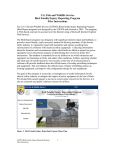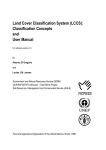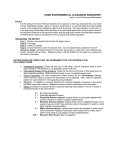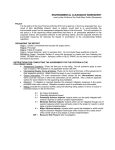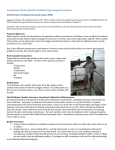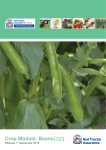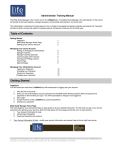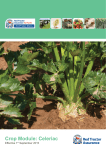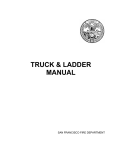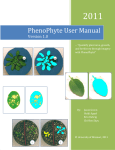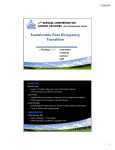Download 2015 Fire Season Guide
Transcript
Prepare for FIRE SEASON GUIDE 2015-2016 © King Fire, September 17, 2014 Use Extreme Caution During These Activities! includes A public service in wildfire prevention brought to you by the U.S. Forest Service, your State Forester, and supported by the Fire Safe Council of Nevada County, Nevada County Fire Chief’s and CAL FIRE. Emergency Preparedness and Evacuation Guide To the Residents of Western Nevada County Nevada County is home to some of the most scenic forestland in the state. The natural beauty and mild, Mediterranean climate have attracted many families to settle in our community. Living in Nevada County is learning to live with fire. In the past, lightning sparked fires that periodically burned to help clear out vegetation fuels on a regular basis and it was beneficial to our forests. Now, most fires are started by people and are becoming more catastrophic in nature. It is not a matter of IF a wildfire will occur, but WHEN and WHERE it will happen. Remember, YOU can prevent forest fires. Prepare your home and family for emergencies now. Creating an area of defensible space does not mean you need a ring of bare dirt around your home. Through proper planning, you can have a beautiful landscape, healthy forest and a fire safe home. Flying embers from wildfires threaten structures from miles away when carried by wind and smoke plumes. With the ongoing drought, vegetation is much drier than usual which means you need to be ready for wildfire year-round. Lack of vegetation management on your property directly affects those around you, so please do your part to protect the forest we all treasure. Use extreme caution when working with equipment to manage the vegetation on your property. Conduct these activities earlier in the day when humidity is higher and temperatures are lower. Many of the calls the fire department responds to are caused by people trying to do the right thing the wrong way. When camping in the forest, be sure to watch an active fire and fully extinguish before you depart. When using natural mulch in your landscaping to retain moisture for plants, do not place these materials within ten feet of your structure. Mulches pose a threat of ignition if embers land there. During the drought, water resources such as lakes and ponds may be too low to utilize for fire suppression efforts. Without snow pack in the higher elevations, this condition will continue to decline. Please allow us to help you when disaster strikes by providing effective defensible space and being prepared to evacuate early. Many homes are simply not defendable and hard choices are made during wildfire events. Please take action to make your home fire safe. Fire Chiefs of Nevada County 2 Creating and Maintaining A Firewise Landscape Vegetation Arrangement The general concept is that native trees should be kept furthest from your home, while shrubs and hardwood ornamental trees may be closer. Bedding plants and lawns may be nearest to the structure. From a wildfire fuel perspective, vegetation is often described in terms of its vertical and horizontal arrangement. The vertical fuel continuity is also referred to as “ladder fuels.” Laddering arrangements of fuels enables fire to climb neighboring vegetation like a ladder. Reduce the chance of fire climbing into trees by removing the lower tree limbs from 6-10 feet from the ground (or the lower third of branches on smaller trees.) Fire spreads on the ground from plant to plant and then onto your home. To reduce the chance of fire spreading horizontally, space or group plants in clumps for visual screening while providing enough space between plants to reduce the fire spreading. Individual spacing needs depends on the height and width of the plant, but generally a three times height for vertical separation is a good rule of thumb. Also consider the overall fuel loading in terms of how much vegetation there is within 100 feet of your home. A more open, park like condition will reduce the overall intensity of the fire. Vegetation Zones The home ignition zone is within 30 feet of the house. The reduced fuel zone lies beyond the home ignition zone and extends out to 100 feet from the house or to the property boundary. Greater defense zone widths are necessary when your home is sited on a steep slope. The most intensive vegetation management lies within the home ignition zone. Objectives for the home ignition zone include: • Remove any combustible materials (such as needles, leaves, dead twigs, firewood, dry grasses, recycling, and building materials) from within 30 feet of the home, garage, outbuildings, and propane tanks. • Reduce the ladder effect between plants. • Replace any flammable plant species (such as juniper, cypress, or broom varieties) with Firewise plant selections. • Maintain high moisture content in the vegetation. Be cautious using mulch in the home ignition zone (see graph.) Mulching With Governor Brown calling for 25% water conservation, mulching plants is a good way to retain soil moisture. Mulch conserves moisture, but also burns. Carefully choose the location of plants or garden beds that will need mulch. Mulches greater than 2 inches deep tend to smolder and are difficult to extinguish. Do not use wood or bark mulches within 5 feet of the house. Instead consider colored rock, pea gravel or other less flammable materials. Having a “hardscape” immediately adjacent to your home will help protect the structure from flying ember intrusion. Where to Plant Avoid putting plants immediately adjacent to the siding, underneath vents or eaves and decks. It is best to plant low-growing and low-volume plants within 10 feet of the structure. Maintenance Maintenance is critical to fire safety. Over time, plants grow both vertically and horizontally, mulches dry out, leaves and needles accumulate within and around landscape vegetation. All of these fuels may help feed a fire. Remember to conduct annual cleanups of your established vegetation to ensure a fire safe condition. A fire safe landscape can increase your property value, provide wildlife habitat and conserve water while beautifying your home. You may download a free Firewise plant guide for Western Nevada County online at: http://www.areyoufiresafe.com/get-fire-smart/defensible-space-and-beyond/firewise-landscaping/ Graph courtesy of University of Nevada. 3 WILDFIRE IS COMING. IS YOUR HOME READY? Harden your home by using fire resistant building materials Remove dead leaves and pine needles from your roof and gutters Remove all dead or dying plants from around your home Maintain 100 feet of Defensible Space GET A SIMPLE 3-STEP PLAN TO PROTECT YOUR HOME AND FAMILY FROM WILDFIRE AT… ReadyForWildfire.org 4 Bark Beetle Outbreak With the fourth consecutive year of below average rainfall, many Registered Professional Foresters are watching for signs of bark beetle infestations in their trees. Do you know what to look for? Have you properly thinned your forest to protect them from moisture stress and bark beetle attacks? You should keep a watchful eye and consider thinning trees for improved vigor and protection against drought and insects. When bark beetle populations are not excessively large they normally go unnoticed by humans. They become more important during large population outbreaks. Trees killed by bark beetles, if not removed, can become a fire hazard or danger of falling on structures, vehicles or people. When pines are stressed bark beetles can successfully attack trees and build up their populations to very high levels, spreading from one tree to another over successive generations. Adult bark beetles bore through the bark of pines and into the cambium layer where they mate and lay eggs. The eggs hatch into larvae which chew galleries, or mines, through the cambium and inner bark. The larvae pupate in the outer bark, become adult beetles, and chew their way out to fly off to another tree and begin a new generation - in California, up to four generations per year. California is experiencing a bark beetle epidemic with the southern Sierras showing 50-60% mortality in pine stands. Help protect our forests by thinning suppressed trees and keep a watchful eye for these symptoms: boring activity Signs and Symptoms of Bark Beetle Infestations • gradual or sudden tree death • yellow to brown or red brown foliage (fade) • bleeding on the trunk, frothy wet material. (oak bark beetles) • white pitch tubes (initial attack of the Western pine beetle) • pitch streaming down trunk (initial attack of the fir engraver) • small reddish brown pitch tubes on bark (most pine engravers) • large pinkish to reddish brown pitch tubes near tree base (red turpentine beetles) • white to pinkish pitch granules near base (red turpentine beetle) • sawdust-like and cinnamon colored boring dust (frass) collecting in bark crevices and spider webs • tunnels under the bark • wood surface ‘engraved’ by • emergence holes in bark • bark flecked (woodpeckers) If you suspect bark beetle activity in your pines, consider having a Registered Professional Forester (RPF) make a visit to your property for an assessment and site specific recommendations. Actual Size of Western Pine Beetle Pine Beetle Pitch Tubes To find a Registered Professional Forester, visit: http://www.bof.fire.ca.gov/ professional_foresters_registration/ locate_a_rpf_or_crm_/ Protecting Wildlife As residents are preparing for wildfire, many wildlife species are still nesting their young. Wildlife Rehabilitation and Release (WR&R) offers the following suggestions to minimize impact on nesting birds and young wild animals. “Many of us forget that as the weather warms up and we begin our spring clean-up chores around our property, wildlife critters may have chosen our property to raise their young. One of the things that folks can do to protect very young rabbits and hares is to keep the weeds low all year round. When people let their weeds grow tall and then cut them short in the spring, it can hurt, kill or expose the babies to predators,” stated Kelly Roberts, small mammal rehabilitator with WR&R. She also recommends carefully examining any burn piles left over winter. Setting the brush piles on fire without inspecting them can kill or injure animals. Jan Crowell reminds folks that it is illegal to trap and relocate wild animals. “This time of year, especially, it is best not to trap and relocate the animals, as most are having babies. By taking moms away they are leaving the young ones to die,” stated Crowell, small mammal rehabilitator for WR&R. She recommends a variety of methods to discourage critters. “Don’t leave cat or dog food out as wild animals don’t know it was not left out for them. Critter proof your chicken house. Use chain link, not chicken wire. Fruit trees can be more difficult. Electronic eye sprinklers, noise makers, dogs, whatever one can do to make the orchard less attractive is a good approach.” Janice Barberry, songbird rehab team leader with WR&R, recommends that before any trees are cut down in the spring, to look for active nest sites and to check for cavity nesters such as woodpeckers before removing trees. “It is most important to take down unwanted trees in the fall or winter after fire season, yet before wildlife baby season.” WR&R recommends that since we all live in wildlife habitat, please consider the following tips to reduce impacts on our fellow wildlife neighbors. “As you plan your spring maintenance chores, please keep in mind how you can be sensitive to the wild critters living in your neighborhood while also being responsible for fire safe practices,” For More Information: Wildlife Rehabilitation and Release http://www.cawildlife911.org/ continued Crowell. WR&R is the non-profit organization staffed totally by volunteers to rehabilitate and release injured or orphaned native wild animals in Nevada and surrounding counties. Tips for Protecting Wild Birds and Animals in the Early Spring • Keep grasses/weeds low all year round • Don’t burn brush piles in early spring without inspecting them first • Don’t trap and relocate animals in the early spring as you will probably leave the young ones to die • Check for nesting birds including cavity nesting species like woodpeckers before removing trees • Cut down unwanted trees and large brush species in the fall if possible. 5 The Fire Safe Council is here to HELP YOU be Fire Safe! The Fire Safe Council of Nevada County is a non-profit, local volunteer based organization dedicated to making Nevada County safer from catastrophic wildfire through fire prevention education, fire break clearing projects and creating Firewise Communities/USA®. 6 Fire prevention education and direct landowner assistance programs are provided through grant funding and community donations. Donations are requested based on the services provided, however, most all programs and services are free of charge regardless of the ability to provide a contribution. The Council offers memberships for specific benefits such as priority chipping service, scheduled chipping service and discounts on products and events. Memberships provide revenue to fund grant writing and local match requirements for grant funded projects. Together, we can make all of Nevada County fire safe! Programs and services provided by your local Fire Safe Council include: • Defensible Space Advisory Visits at Your Home • Year-Round, Drive-By Chipping Service • Firewise Landscaping Guide • Defensible Space Clearing for Low-Income Seniors and Disabled • Defensible Space Verification Service for Homeowner’s Insurance (fee service) • Educational Lending Library – Videos, Books and Scientific Periodicals • Emergency Evacuation Planning • Scotch Broom Challenge – Weed Wrench Loans & Community Project Sites • Fire Safe Products – Reflective Road/ Address Signs & Fire Rated Tarps • Firewise Community Wildfire Hazard Assessments • Firewise Communities/USA® Certification Assistance • Neighborhood Education Presentations • Reduced Cost CAL STAR & REACH Air Ambulance Service Memberships • Strategic Community Fuel Reduction Projects • Children’s Fire Prevention Education Program • Memberships for Individuals, Associations and Businesses • Annual Awards Program for Volunteer, Firewise Community & Partner of the Year For complete information on all programs and services, please visit www.areyoufiresafe.com or call the Fire Safe Council at (530) 272-1122. Land Stewardship & Illegal Camping Over the past few years, there have been numerous wildfire ignitions from illegal camp fires in our community. The concern of another 49’er Fire, sparked by a person trespassing on vacant property and burning debris, is a constant worry of fire officials. The 1988 49’er Fire burned over 33,000 acres and 312 structures in four days. It is still listed as the 17th most devastating wildfire in California history by structures lost even 27 years later. It has been proven, that good forest management and land stewardship deters trespassers due to the open, parklike condition that does not provide any vegetation cover for illegal camp sites. Cooking, warming and ceremonial fires are legal on your own property. If you so choose, you may give permission for people to camp on your property, but may also be left with the cost of the clean-up – garbage, hazardous materials – and other environmental damage caused by them. If you own property and have people camping without your permission, there are specific actions you may take to remove them. 1. You must post the property with “no trespassing signs”. Be sure to put these signs up high enough so that they may not be easily torn down. Make an effort to survey the property to identify any potential camp sites. 2. Enlist the support of local law enforcement in contacting any campers to notify them they are trespassing and that you will have them removed. File a “602” letter with the local law enforcement agency to authorize them to remove any identified trespassers. Pictured left to right: Don Hoffler, Robinson Enterprises; Charlie Litton, representing the Litton Family; and Jeff Wagner, Deputy Fire Marshal, Grass Valley Fire Department. Private property owners need to re-sign the “602” letter each year for it to remain in effect. 3. Conduct vegetation management to thin suppressed trees, remove understory brush and ladder fuels, and limb up the trees to be saved 6-10 feet from the ground. 4. Remove any trash or debris remaining from the illegal camp sites. 5. Monitor the property (or work with a neighbor if you live out of town) to control the re-growth of vegetation. SPECIAL RECOGNITION FOR LAND STEWARDSHIP During the Firewise Community Wildfire Hazard Assessment for the Glenwood-MaiduCharlene Neighborhood in the summer of 2013, a landscape wildfire hazard was identified. A large, vacant property in the vicinity had a number of illegal camp sites in a heavily forested area with abundant understory brush and ladder fuels. Members of the hazard assessment team including Grass Valley Fire Department, Cal Fire, Fire Safe Council and a Registered Professional Forester recommended the landowner be contacted and asked to reduce the fuel loading on the property. In the winter of 2014, an old cabin on the property was ignited by illegal campers and it burned to the ground. The landowner recently conducted a mastication project, contracting with local Robinson Enterprises for the project. The transformation to a healthy forest was so remarkable that the Board of Directors of the Fire Safe Council of Nevada County awarded the landowners a Special Recognition for Land Stewardship. The project is highly visible and serves to help educate the public about good vegetation management for forest health. The landowner reported that there were over 20 individual camp sites on this property obscured by heavy vegetation. This project is also an example of how good forest management can attain multiple objectives. 7 General vicinity map for community defense Fuel Reduction in Western Nevada County Local, State, and Federal agencies and organizations have been working to reduce the fuels in western Nevada County for many years. In the area east and northeast of Scotts Flat Lake and Cascade Shores subdivision, several different projects in different ownerships are coalescing to provide better wildfire defense in a strategic landscape approach. Tahoe National Forest: Fuels reduction activities continue on National Forest System land with the goals of improving evacuation routes and reducing intensity of fire behavior. These activities will also increase the suppression capabilities of firefighters and create safer areas to fight fires. This is the second year of the Western Nevada County Community Defense Project—Madrone Springs. The Project will continue with hand cutting and hand piling throughout the summer in the Washington Ridge Road and Cooper Road areas. During the fall/winter season, when ground and fuel conditions are wet, pile burning will take place on 326 acres. Mastication (mechanical thinning) of brush, small understory trees and downed woody fuels will also occur on 289 acres of National Forest System lands. In the first year of the Project, 466 acres were hand cut, pruned and 8 piled, and 11,000 piles on 222 acres was completed. Questions can be directed to Eric Burke, Vegetation Management Officer – 530-478-6222, or Mike Cherry, Fire Management Officer – 530-288-3231, on the Yuba River Ranger District. Bureau of Land Management: The BLM Mother Lode Field Office issues Hazardous Fuels Variance Permits to landowners who wish to reduce fuels on adjacent BLM land. After receiving a permit request, BLM will perform the necessary environmental and other reviews for the project before issuing the permit. Throughout the 2012-2015 fire seasons, BLM has been providing fuel reduction and strategic fire planning in the South Yuba watershed, the Inimim Forest and Round Mountain areas. BLM will be conducting prescribed fire within many areas of Nevada County. BLM continues to support the Fire Safe Council with personnel and equipment. BLM encourages landowners to “Take Responsibility” and maintain 100’ defensible spaces around their homes. For more information, visit www.preventwildfireca.org The Fire Safe Council of Nevada County: Work continues to implement strategic fuel reduction projects on the ground to reduce catastrophic wildfire and protect homes. During the 2014-15 fiscal year, an expansion of the Deer Creek Community Fuel Break below the Morgan Ranch subdivision and along Champion Mine Road in Nevada City was implemented. Ultimately, this fuel break will be two miles long on either side of Deer Creek to help protect ridgetop home developments from ignition sources in the environs. Ignitions from illegal camping continue to be a high concern among fire agencies. Fuel reduction projects deter illegal camping activity due to the open nature of the forest after treatment.The numerous individual certified Firewise Communities are also implementing fuel reduction projects in their neighborhoods to address identified hazards through their action plans. Firewise Communities pulled cleared evacuation routes, removed Scotch Broom, cleared adjacent vacant parcels or assisted low income seniors/disabled with defensible space. These Firewise Communities projects utilized the assistance of AmeriCorps National Civilian Community Corps crews sponsored by the Fire Safe Council. These fuel reduction projects combined represent over 150 acres of community fuel reduction treatments in the past year. Madrone Springs Project BEFORE Madrone Springs Project AFTER 9 2-1-1 Nevada County & Disaster Response 2-1-1 Nevada County is a resource and information hub that connects people with community, health and disaster services through a free, 24/7 confidential phone service and searchable online database. 2-1-1 locally serves the entire population of Nevada County. 2-1-1 is a free confidential phone number that offers assistance in multiple languages, and services that are accessible to people with disabilities. In the wake of a County emergency, 2-1-1 provides citizens with critical non-emergency assistance such as: Information on evacuation and return routes; mass care shelter/housing options; food and water; social services; family reunification status; animal and pet evacuation information; traffic and road closures. 2-1-1 programs have been used to relieve pressure on the 911 system and emergency response teams by providing an easy number for citizens to remember and call for non-emergency needs, freeing up emergency responders to deal with true emergencies. In addition, 2-1-1 provides a valuable referral number for public safety and health personnel. Police, Sheriff, CHP, and Fire personnel have an easyto-remember number to give to at-risk populations as a resource to help with their needs in any type of emergency or for ongoing assistance. For example, police officers are able to give one phone number, composed of three digits for marriage/family counseling, substance abuse, job training, children/ senior services, health care services and other assistance which may help the family avoid violence and abuse. 2-1-1 helps law enforcement and the courts connect people in need with resources to help. Finally, 2-1-1’s trained information and referral specialists give personalized attention to each caller by utilizing a comprehensive computerized database of more than 800 Agencies. 911 Wireless Services & Emergencies The number of 911 calls placed by people using wireless phones has significantly increased in recent years. It is estimated that about 70 percent of 911 calls are placed from wireless phones. For many people, the ability to call 911 for help in an emergency is one of the main reasons they own a wireless phone. While wireless phones can be an important public safety tool, they also create unique challenges for emergency response personnel and wireless service providers. Since wireless phones are mobile, they are not associated with one fixed location or address. While the location of the cell site closest to the 911 caller may provide a general indication of the caller’s location, that information is not always specific enough for rescue personnel to deliver assistance to the caller quickly. Consumers making a 911 call from a wireless phone should remember the following: Tell the emergency operator the location of the emergency right away. Provide the emergency operator with your wireless phone number, so if the call gets disconnected, the emergency operator can 10 call you back. If your wireless phone is not “initialized” (meaning you do not have a contract for service with a wireless service provider), and your emergency call gets disconnected, you must call the emergency operator back because the operator does not have your telephone number and cannot contact you. Refrain from programming your phone to automatically dial 911 when one button, such as the “9” key, is pressed. Unintentional wireless 911 calls, which often occur when auto-dial keys are inadvertently pressed, cause problems for emergency call centers. If your wireless phone came pre-programmed with the auto-dial 911 feature already turned on, turn this feature off (consult your user manual for instructions). Lock your keypad when you’re not using your wireless phone to help prevent accidental calls to 911. Consider creating a contact in your wireless phone’s memory with the name “ICE” (In Case of Emergency), which lists the phone numbers of people you want to have notified in an emergency. EMERGENCY NOTIFICATION SYSTEM The Nevada County Office of Emergency Services (OES) has contracted with the Emergency Communications Network to utilize their CodeRED Emergency Notification System. CodeRed is an additional way for residents of Nevada County to be notified of emergencies to include evacuation orders if a wildfire is threatening your neighborhood. If you desire to be notified via your AT&T residential or business phone only, no action is required on your part since your phone number is already accessible as part of the public safety data base. In order to be notified by the CodeRED via your cable service phone line, cell phone, cell phone text messaging, and email, residents will need to manually add their information. To assure your additional contact information is included; go to the Nevada County OES website at http://www. mynevadacounty.com/nc/igs/oes/ and look for the CodeRED link. Though all Emergency Notification systems are considered effective and efficient, you should not wait for or rely exclusively on a phone call for evacuation direction. If you think you are in immediate danger, do not hesitate to evacuate. CodeRED will only be activated by County public safety personnel. You must be a resident of Nevada County to add your information into CodeRED. For assistance adding your information into CodeRED, contact the Nevada County Office of Emergency Services at: 530-265-1515 or [email protected] AIR AMBULANCE SERVICES Are you covered for air ambulance transport services? Living in a rural area, you should be! Due to the lack of a local medical trauma center, major life threatening injuries require air ambulance transport to save lives. These air ambulance transports can be very expensive. Some medical insurance policies will cover the cost, while others will not. Check with your medical insurance carrier now to find out if you’re covered. You don’t want to find out after transport and be left with up to a $35,000 bill to pay for this service depending on where you were injured and taken for treatment. The Fire Safe Council of Nevada County’s mission includes helping our residents prepare for emergencies. To aid in meeting this mission, they have negotiated group discounts with both Cal Star and In Reach Air Ambulance Service providers. Simply state that you are in the “Fire Safe Council of Nevada County group” when signing up for service or renewing your existing policy and save up to $15 a year. These policies cover everyone at your residential address. Get peace of mind by knowing that you are prepared for being transported by air ambulance during life threatening emergencies. Nevada County Firewise Communities/USA®! By working together, residents can make their own property – and their neighborhood – much safer from wildfire. The Fire Safe Council of Nevada County has been assisting individual neighborhoods in completing the National Fire Protection Association’s Firewise Communities/USA® certification process for over 7 years. Nevada County currently has more certified Firewise Communities/USA® than any other county in California. It begins with a few concerned citizens who form a committee. Next, a community wildfire hazard assessment is conducted in collaboration with a Registered Professional Forester, your local fire department and CAL FIRE. From this assessment, recommendations are given in how to best address the wildfire hazards. The community committee develops an action plan to implement the recommendations. Once the action plan is in place, an educational event is held to let residents know their part in implementing the action plan. The certification is renewed annually to keep a focus on the ongoing need for vegetation management to reduce the wildfire fuel on the landscape. The Fire Safe Council has aided the following communities in attaining the Firewise Communities/USA® certification: • Lake Wildwood Association – 2007 • Lake of the Pines Association – 2009 • Mountain Lakes Estates – 2010 • Friends of Banner Mountain – 2010 • Tahoe-Donner Association – 2010 • Greater Cement Hill Neighborhood Association – 2012 • Serene Lakes Property Owner’s Association – 2012 • Greater Alta Sierra Firewise Community – 2012 • Golden Oaks Homeowner’s Association – 2013 • Rattlesnake Ridge Estates – 2013 • Ridgeview Woodlands Homeowner’s Association – 2014 • Cascade Shores Homeowner’s Association – 2014 • Glenwood-Maidu-Charlene Neighborhood – 2014 • Rattlesnake Neighborhood Association – 2014 Several local communities are currently undergoing the certification process including: Toller Ridge Court Homeowners; Greater Champion Neighborhood Association; Brunswick East Condominiums; Stonebridge Homeowner’s Association and The Gazebo’s. There is also a waiting list of seven communities to become certified. Aside from being safer from wildfire by working together in your neighborhood to address the wildfire hazard, you may be eligible for a discount on your homeowner’s insurance if you live in a certified Firewise Community/USA®. Last year, the United Services Automobile Association (USAA) announced a rate reduction program for California which provides policyholders living in Firewise Communities/USA® a 5% discount on their homeowner’s insurance policies. That’s cash savings along with the peace of mind that you’ve done all you can to protect your family and property from the most significant natural disaster threat residents face living in Nevada County. To learn more, contact the Fire Safe Council of Nevada County at (530) 272-1122 or online at www.areyoufiresafe.com 11 Local Biomass Energy Facility Planning The Nevada County Biomass Task Force is continuing to work toward the goal of having a biomass energy facility in Western Nevada County. The task force began work almost 6 years ago with an interest in helping reduce wildfire hazard both around our communities and in the forested areas that provide so many valued resources like water, wildlife habitat and recreation. It was soon clear that a biomass energy facility would be one way of meeting that interest—by providing a market for excess biomass in the form of small trees, limbs, tops and defective logs that are produced from forest management and hazard reduction projects in our communities and surrounding forestlands. A biomass energy facility will use the excess biomass to product electrical energy that will be fed into the existing electrical grid. The biomass will be chipped at project sites and hauled by truck to the facility. The facility will convert the chips to biogas using well-established gasification technology. The biogas will be used onsite to power an internal combustion engine that will in turn run a generator. Such technology is very clean—think natural gas engine—and will use biomass that is for the most part now being disposed of by open burning, chipping or mastication onsite. All three of these disposal methods result in emissions of carbon dioxide, a greenhouse gas. Open burning, the most common disposal method, also produces other greenhouse gases and climate changeimpacting emissions. The task force received grant funding in 2014 to complete a Biomass Feasibility Assessment that showed there is adequate biomass available on a long-term sustainable basis to support a biomass energy facility. The assessment also identified several feasible sites for a facility. The task force recently received a grant to continue facility planning work. The latest grant, for which the Fire Safe Council of Nevada County is the fiscal manager, will fund basic site planning and completion of the Conditional Use Permit work necessary for establishing the biomass facility. The task force will be selecting a single site from the list of feasible sites to be the focus of this planning and permitting work. If all goes well, the work will be completed in the next two years, after which efforts will include working with potential energy facility developers to pursue actual construction. The Nevada County Biomass Task Force is a volunteer organization that is open to anyone in the community who has interest. For further information, you can visit the Fire Safe Council of Nevada County website at www.areyoufiresafe.com under the Resources Tab, Biomass section. Engineer’s rendering of a proposed biomass facility in Placer County. Nevada County Hazardous Vegetation Abatement Ordinance In June of 2014 the Nevada County Board of Supervisors passed Ordinance Number 2380 adding Article 7 to the Nevada County General Code regarding Hazardous Vegetation Abatement. In a nutshell, the ordinance gives the Federal, State and Local Fire Agencies the ability to require the property owner of an unimproved parcel to clear a portion of their parcel that is next to an improved parcel for the purposes of obtaining their Defensible Space. In the past Fire Officials could not require any clearing of vacant parcels. Nevada County Consolidated Fire District had a program where by local ordinance they would look at “Target Areas” and send notices to the owners of vacant parcels requiring them to clear their land of hazards. No work could be done outside these Target Areas. After numerous citizen complaints, the Board of Supervisors put together a committee to work on an ordinance to help the Fire Agencies by establishing a hazardous vegetation abatement ordinance that provides a process to identify and 12 abate hazardous vegetation on unimproved parcels and protects the lives and property of the citizens of Nevada County, while at the same time protecting sensitive plant and animal species and protecting against significant erosion and sedimentation. The removal of hazardous vegetation in the areas subject to this Article is recognized as an essential action homeowners and property owners can take to increase the chances that homes, structures and other property will survive a wildfire, while protecting the natural environment. Regular fuels management and modifications on unimproved parcels is necessary to ensure adequate defensible space is achieved. Fire Officials can now take action by first notifying the property owner of the hazard and giving them 30 days to comply. If the hazard is not abated the fire official has the choice of issuing an Administrative Citation, a criminal citation, or go through the process of abatement and recovering the costs for that work. The property owner has the right to appeal the decision if they feel no hazard exists. Since this is something new to not only the property owners but the Fire Agencies, we will all need to continue to work together to make this ordinance a success. If you have any questions or concerns about the ordinance or a possible hazardous parcel contact your local fire agency. Assistance For Forest Landowners The U.S. Department of Agriculture’s Natural Resources Conservation Service (NRCS) is a federal agency that emphasizes voluntary, science-based assistance to help private forest landowners. The NRCS promotes and informs private forest landowners about forestry practices that can improve growth, reduce risk, and improve forest health. Many of these practices can be cost-shared through Farm Bill programs. CONSERVATION PLANNING The NRCS works with forest landowners to develop a conservation plan customized to meet the owner’s objectives for their land. The conservation plan will address resource concerns and propose improvements that can be voluntarily implemented on the landscape. Conservation planning provides direction to forest landowners to achieve goals and improve natural resources. HEALTHY FORESTS Forest health is a very broad term. Many forests are both healthy and productive. A number of concerns have been identified as major forestry problems. These include fire and fuels, invasion of non-native and native pests, loss of biodiversity, air pollution, water quality and quantity, and degraded riparian forests. Many forest stands have too many trees per acre or contain a disproportionate amount of shrubs in the understory. This competition for light, nutrients, and water leaves forests extremely susceptible to disease and insect damage, increases the risk of catastrophic fire, reduces productivity, and provides poor quality wildlife habitat as well as limited recreational opportunities. FUEL HAZARD REDUCTION Forests and woodlands make up about 42 percent of California and half of that portion is in private ownership. Many of these acres are overstocked and at risk of wildfire damage. California and many of our neighboring states have experienced abnormally dry conditions. These adverse conditions have fueled severe wildfires that are challenging our natural resources. FOREST LANDOWNER ASSISTANCE NRCS conservationists can assist forest landowners with management decisions as well as providing technical and financial assistance to improve forest health and reduce the impacts of catastrophic wildfires. In more than 75 years of assisting forest landowners, NRCS has assembled a body of technical standards to help producers address a large number of natural resource concerns. ENVIRONMENTAL QUALITY INCENTIVES PROGRAM (EQIP) The Environmental Quality Incentives Program (EQIP) is a voluntary conservation program that promotes production and environmental stewardship as compatible goals. EQIP shares conservation costs with landowners to implement conservation practices on the landscape. The Conservation Stewardship Program (a separate program) can help forest landowners obtain even higher levels of environmental enhancements. HOW TO APPLY Contact the local NRCS District Conservationist at (530) 272-3417 x 101. Eligible projects will be evaluated, prioritized and selected for funding as budget allocations permit. TYPICAL NRCS FOREST CONSERVATION • Site Preparation • Tree Planting • Forest Stand Improvement • Controlling Competing Vegetation • Fuel Break • Sediment Reduction from Roads and Trails • Slash Disposal • Wildlife Management Activities Without effective management, understory plants compete with trees for water, nutrients and sunlight. 13 DON’T BURN DOWN OUR TOWN! Hot sparks and campfires put everyone at risk 14 Local Firewise Communities & Fire Safe Council of Nevada County 530-272-1122 www.AreYouFireSafe.com RESOURCE DIRECTORY Agencies to assist with fuel reduction, conservation planning, & emergency preparedness. Fire Safe Council of Nevada County (530) 272-1122 Nevada County Office of Emergency Services (530) 265-1515 Nevada County Resource Conservation District (530) 272-3417 Cal Fire – Regional Office – Auburn (530) 889-0111 Cal Fire Recorded Fire Incident Information (530) 823-4083 Tahoe National Forest (530) 265-4531 Bureau of Land Management (916) 941-3101 Nevada County Public Health Department (530) 265-7174 American Red Cross Capital Region (916) 993-7070 American Red Cross Northeastern Chapter (530) 673-1460 15 Plant the “Right Tree in the Right Place” Tree Planting Safety The best way to protect yourself and your home is by planting the “right tree in the right place.” Though some large trees grow under power lines naturally, many are planted without the realization of how large they would eventually become. So, select a tree with the proper height at maturity for its location. Your safety is PG&E's top priority. Planting trees under power lines can pose electrical shock hazards and fire safety risks. To stay safe, keep the lights on and get the long-term benefit, beauty and satisfaction from the trees you plant, refer to the planting zone guidelines below. Plant for personal and fire safety. Use the "Small, Medium and Tall Zone" guidelines near distribution lines and the "Wire Zone, Border Zone, Outer Zone" guidelines near transmission lines. If you're not sure whether a line is distribution or transmission call us at 1-800-743-5000. When landscaping be sure to consider overhead power lines and underground utilities in addition to fire hazard, sun exposure and soil conditions when selecting shrubs and trees. Tall Zone Trees taller than 40 feet at maturity Medium Zone Trees no taller than 40 feet at maturity Small Zone Trees no taller than 25 feet at maturity Distribution Line Planting distances from distribution lines: 50 ft. 15 ft. 0 Wire Zone No trees For more information about trees and power lines: • Visit www.pge.com/trees • Request a "Guide to Planting Small Trees Near Distribution Lines" by calling 1-800-743-5000 or email [email protected]. Specify: Northern California, Central California or the Bay Area/Inland area. Border Zone Only small trees or shrubs. Outer Zone Trees no taller than the distance to the wire at maturity. Transmission Line Only low growing shrubs. Incompatible vegetation is subject to removal. 6/2009 BUREAU OF LAND MANAGEMENT Take Responsibility... Protect your home. Create 100 feet of defensible space! MOTHER LODE FIELD OFFICE takeresponsibility.cafirealliance.com















